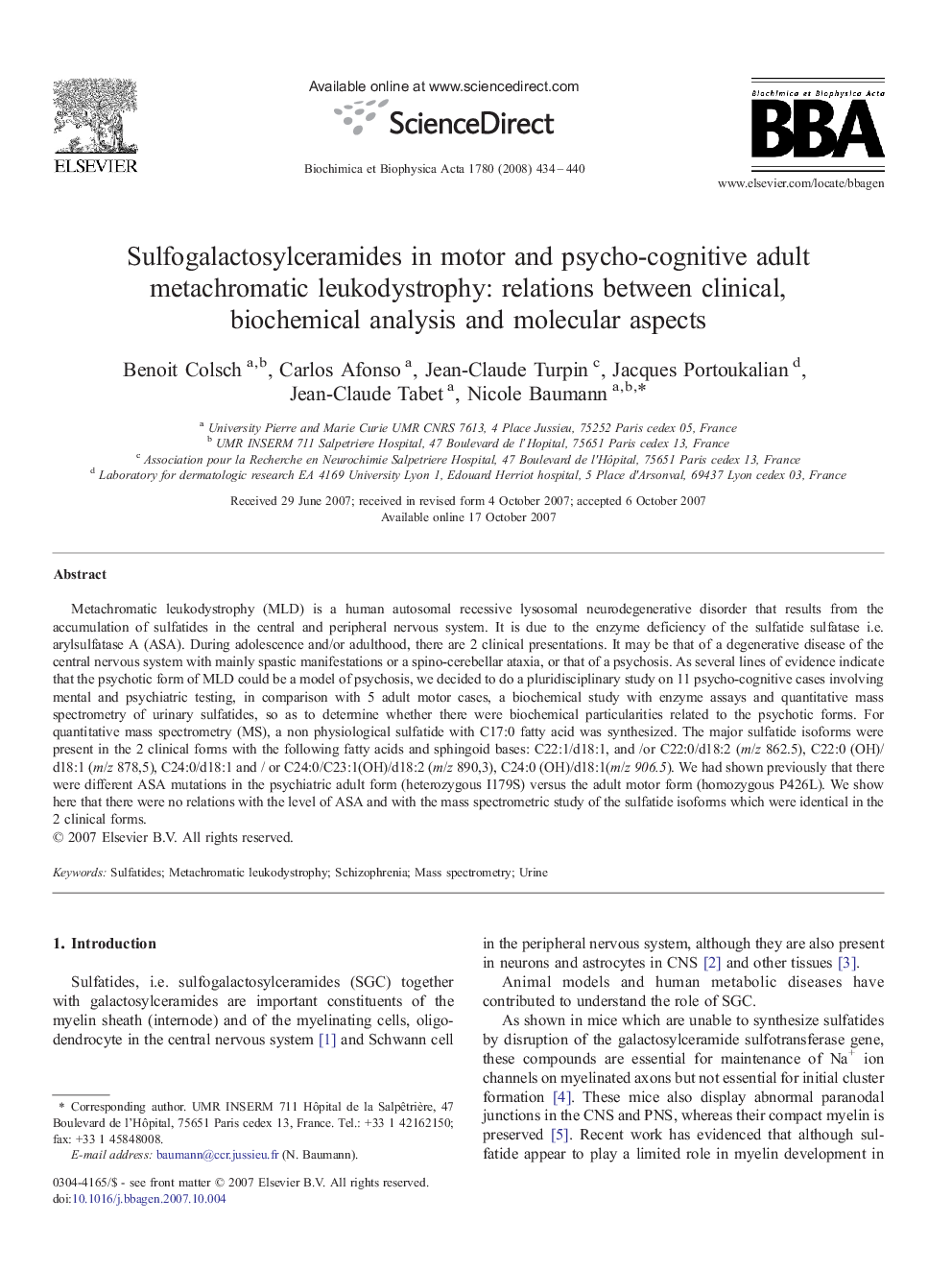| Article ID | Journal | Published Year | Pages | File Type |
|---|---|---|---|---|
| 1948405 | Biochimica et Biophysica Acta (BBA) - General Subjects | 2008 | 7 Pages |
Metachromatic leukodystrophy (MLD) is a human autosomal recessive lysosomal neurodegenerative disorder that results from the accumulation of sulfatides in the central and peripheral nervous system. It is due to the enzyme deficiency of the sulfatide sulfatase i.e. arylsulfatase A (ASA). During adolescence and/or adulthood, there are 2 clinical presentations. It may be that of a degenerative disease of the central nervous system with mainly spastic manifestations or a spino-cerebellar ataxia, or that of a psychosis. As several lines of evidence indicate that the psychotic form of MLD could be a model of psychosis, we decided to do a pluridisciplinary study on 11 psycho-cognitive cases involving mental and psychiatric testing, in comparison with 5 adult motor cases, a biochemical study with enzyme assays and quantitative mass spectrometry of urinary sulfatides, so as to determine whether there were biochemical particularities related to the psychotic forms. For quantitative mass spectrometry (MS), a non physiological sulfatide with C17:0 fatty acid was synthesized. The major sulfatide isoforms were present in the 2 clinical forms with the following fatty acids and sphingoid bases: C22:1/d18:1, and /or C22:0/d18:2 (m/z 862.5), C22:0 (OH)/d18:1 (m/z 878,5), C24:0/d18:1 and / or C24:0/C23:1(OH)/d18:2 (m/z 890,3), C24:0 (OH)/d18:1(m/z 906.5). We had shown previously that there were different ASA mutations in the psychiatric adult form (heterozygous I179S) versus the adult motor form (homozygous P426L). We show here that there were no relations with the level of ASA and with the mass spectrometric study of the sulfatide isoforms which were identical in the 2 clinical forms.
